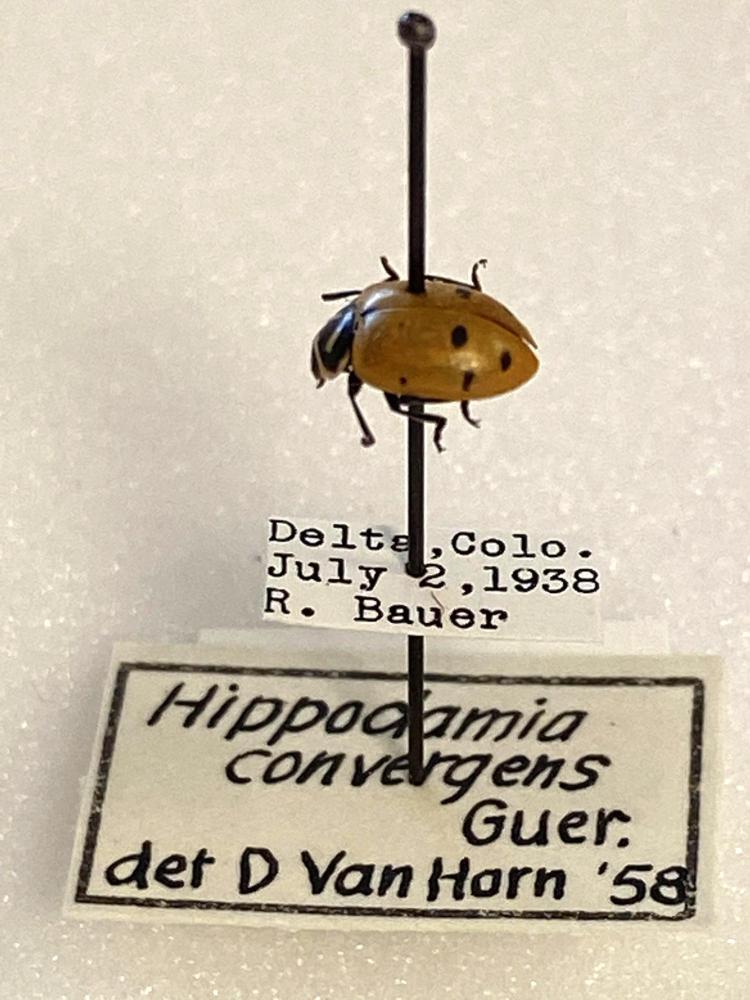The CU Museum is closed until January 8, 2026.
During this time, collection visits will be available by appointment and other special access requests will be considered on a case-by-case basis.
Please email cumuseum@colorado.edu for more information.
Convergent Lady Beetle

Like butterflies, beetles develop through the process of complete metamorphosis.2 The cycle begins as an egg: a mother lady beetle can lay up to 200 eggs in her lifetime, usually in clusters of 20-30 on a plant. The eggs will hatch into black and red larvae, which feed on garden pests including aphids. When food resources are limited, larvae are cannibalistic and will eat eggs and larvae of their own. Next, the larvae mature into immobile pupae. Lastly, the familiar winged red beetle with black spots emerges.
Convergent Lady Beetles are natural enemies of pests commonly found in gardens and greenhouses such as aphids, scales and thrips. The voracious appetite of the lady bird beetle adults and larvae has led to commercial collection and sale of these insects and they can commonly be found for sale at garden stores. Most beetles sold in garden stores are collected from locations in California, and for Colorado gardens it is more advantageous to create habitat for the lady birds than to purchase the insects. Lady birds are migratory, and store-purchased individuals often do not stay in your garden for long. A garden with a variety of flowers will invite lady birds to stay awhile!
The Lost Lady Bug Project is a community science effort to track the various species of lady bird beetles. To participate in this project and upload photos of the beetles you encounter, visit their site! In the meantime, you will reward yourself by learning more about the other 79+ species of lady beetles in Colorado!
Common name: Convergent Lady Beetle
Scientific name: Hippodamia convergens Guerin-Meneville
Catalog number: UCMC 0158263
Label data: USA: Delta County, Colorado; July 2, 1938; R. Bauer
1. Cranshaw, W. S. (2014, July). Lady Beetles. Colorado State University Extension, Fact Sheet Number 5.594. Accessed: January 5, 2021.
2. Aristizábal, Luis F.; Arthurs, Steven P.; Oldenettel, Jerry. (2014, May; Reviewed February 2018) Entomology and Nematology Department, University of Florida. Featured Creatures: Convergent Lady Beetle. Publication Number: EENY-592. Accessed: January 5, 2021.

